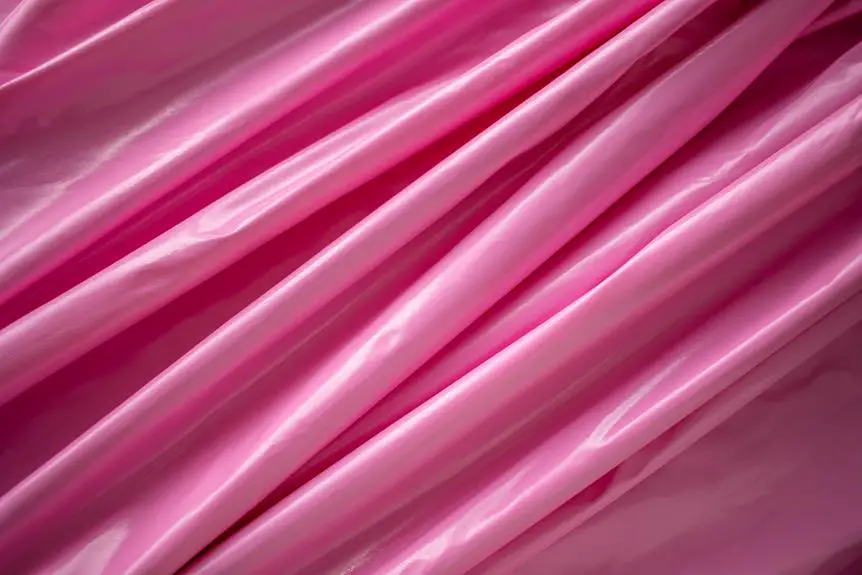You may be wondering whether it's necessary to rinse soda ash before dyeing fabric. While it's common to skip this step, rinsing soda ash can actually make a significant difference in the outcome of your dyeing process.
Understanding the role of soda ash in fabric dyeing and the potential benefits and drawbacks of rinsing it beforehand is crucial for achieving the best results. In this guide, we'll explore the factors to consider and provide insights to help you make an informed decision.
Whether you're a seasoned fabric dyer or just starting out, mastering the use of soda ash can elevate the quality of your dyed fabrics.
Key Takeaways
- Soda ash is crucial in fabric dyeing as it creates an alkaline environment for dye bonding and increases dye effectiveness.
- Rinsing soda ash before dyeing prepares the fabric for optimal dye penetration and promotes better color retention and vibrancy.
- However, rinsing soda ash may disrupt the pH levels of the fabric, leading to uneven dye absorption and inconsistent color saturation.
- The decision to rinse soda ash depends on the fabric type, quality, and desired color fastness of the fabric.
What Is Soda Ash and Its Role in Fabric Dyeing
When dyeing fabric, you'll need to understand the role that soda ash plays in the process.
Soda ash, also known as sodium carbonate, is a crucial component in fabric dyeing. It serves several benefits in the dyeing process, particularly in facilitating the chemical reaction between the dye and the fabric.
The primary function of soda ash is to create an alkaline environment, which is essential for the dye to chemically bond with the fabric. This chemical reaction is vital for achieving vibrant and long-lasting colors on the fabric.
Additionally, soda ash helps to increase the effectiveness of the dye by making the fabric more receptive to the color. It also aids in ensuring color-fastness, preventing the dye from washing out or fading quickly.
Moreover, soda ash can improve the overall consistency and evenness of the dye penetration, resulting in a more uniform and professional-looking dyed fabric.
Understanding the role of soda ash in fabric dyeing is crucial for achieving the desired results. By creating the right chemical environment and enhancing the dyeing process, soda ash is an essential element in producing beautifully dyed fabrics.
Pros of Rinsing Soda Ash Before Dyeing
Before dyeing fabric, you should consider rinsing soda ash to ensure optimal dye penetration and color-fastness.
Rinsing soda ash before the dyeing process is crucial for several reasons. Firstly, it helps in effectively preparing the fabric for the dyeing process. Soda ash, when used in dyeing, works by increasing the pH levels of the water, which in turn allows the fabric to better absorb the dye. By rinsing the soda ash beforehand, you can ensure that it's evenly distributed throughout the fabric, promoting the effectiveness of the dyeing process.
Secondly, rinsing soda ash before dyeing fabric contributes to better color retention. When soda ash isn't rinsed properly, it can leave a residue on the fabric, which may interfere with the dye's ability to bond with the fibers. This can result in uneven coloring or fading over time. Rinsing the soda ash mitigates this issue, allowing the dye to penetrate the fibers evenly and deeply, leading to enhanced color vibrancy and longevity.
Cons of Rinsing Soda Ash Before Dyeing
While rinsing soda ash before dyeing fabric does offer benefits, there are some drawbacks to consider as well. Before dyeing, rinsing soda ash can disrupt the pH levels of the fabric, impacting the final color result. Furthermore, rinsing the fabric can lead to uneven dye absorption, affecting the overall appearance of the dyed fabric.
- Disrupted pH Levels
Rinsing soda ash may alter the pH levels of the fabric, potentially leading to unexpected color variations when dyeing. This can result in an uneven or splotchy appearance, compromising the desired outcome of the dyeing process.
- Uneven Dye Absorption
The rinsing process can affect the chemical reactions between the dye and the fabric, leading to uneven dye absorption. This can cause inconsistencies in color saturation, resulting in an undesirable finish.
When considering the cons of rinsing soda ash before dyeing, it's essential to weigh the potential negative impacts on pH levels and dye absorption. Understanding these drawbacks can help you make an informed decision regarding whether to rinse soda ash before dyeing fabric, ensuring the best possible results for your dyeing projects.
Best Practices for Using Soda Ash in Fabric Dyeing
To achieve optimal results in fabric dyeing, you should thoroughly mix the soda ash into the water before adding the fabric. Properly preparing the fabric is crucial for ensuring that the dye adheres evenly and consistently. Before dyeing, it's important to pre-wash the fabric to remove any finishes or substances that may interfere with the dye absorption. Additionally, you should soak the fabric in a solution of water and soda ash to ensure that the dye adheres effectively.
Color fastness is a key consideration when using soda ash in fabric dyeing. To enhance the color fastness of the dye, it's essential to follow the recommended soda ash to water ratio and ensure thorough mixing. After dyeing, rinsing the fabric with cold water and allowing it to air dry can help set the dye and improve color fastness. It's also crucial to avoid using excessive soda ash, as this can lead to an uneven dyeing process and affect the final color outcome.
How to Determine Whether to Rinse Soda Ash
When deciding whether to rinse soda ash before dyeing fabric, it's important to consider the specific dyeing process and the desired color fastness of the fabric.
To determine the need for rinsing soda ash, follow these steps:
- Evaluate the Fabric: Check the fabric type and quality. If it's a natural fiber like cotton or silk, rinsing the soda ash may be necessary to ensure the dye adheres properly. Synthetic fibers may not require rinsing as they don't absorb soda ash in the same way.
- Consider Color Fastness: Assess the desired color fastness of the fabric. If you want the dye to penetrate deeply and create long-lasting, vibrant colors, rinsing the soda ash becomes more crucial. However, if the color doesn't need to be as intense or long-lasting, rinsing may be less necessary.
Frequently Asked Questions
How Does Rinsing Soda Ash Affect the Intensity and Vibrancy of the Dye on the Fabric?
Rinsing soda ash before dyeing fabric can impact color vibrancy and dye penetration depth. By removing excess soda ash, the fabric can better absorb the dye, resulting in more intense and vibrant colors.
Can Rinsing Soda Ash Before Dyeing Fabric Affect the Longevity and Color-Fastness of the Dye?
Rinsing soda ash before dyeing fabric can impact dye penetration and affect fabric texture. It may improve longevity and color-fastness by ensuring the dye bonds effectively. Rinsing also removes excess soda ash, preventing potential texture alteration.
Are There Specific Types of Fabric or Dye That May Be More or Less Affected by Rinsing Soda Ash Before Dyeing?
When dyeing fabric, consider specific fabric types and dye compatibility. Pre-dye treatment, such as rinsing soda ash, can impact color retention. Different fabrics and dyes may be more or less affected, so it's essential to test beforehand.
What Are Some Alternative Methods for Prepping Fabric for Dyeing if You Choose Not to Rinse Soda Ash?
To prep fabric for dyeing without rinsing soda ash, consider alternatives like using a dye fixative, soaking fabric in vinegar solution, or using a dye activator like urea. These methods can impact dye longevity and are influenced by fabric and dye types. Always consider environmental and safety precautions.
Are There Any Environmental or Safety Considerations to Take Into Account When Deciding Whether to Rinse Soda Ash Before Dyeing Fabric?
Consider the environmental impact of soda ash runoff and safety concerns when handling concentrated solutions. Protect local water sources by properly disposing of wastewater. Prioritize personal safety by avoiding direct skin and eye contact with undiluted soda ash.
- Tetron Fabric for Marine Applications: Durability and Use Cases - June 18, 2025
- Tetron Fabric for Outdoor Furniture: Weather Resistance and Care - June 18, 2025
- Tetron Fabric for Wall Coverings: Style and Application Tips - June 18, 2025



